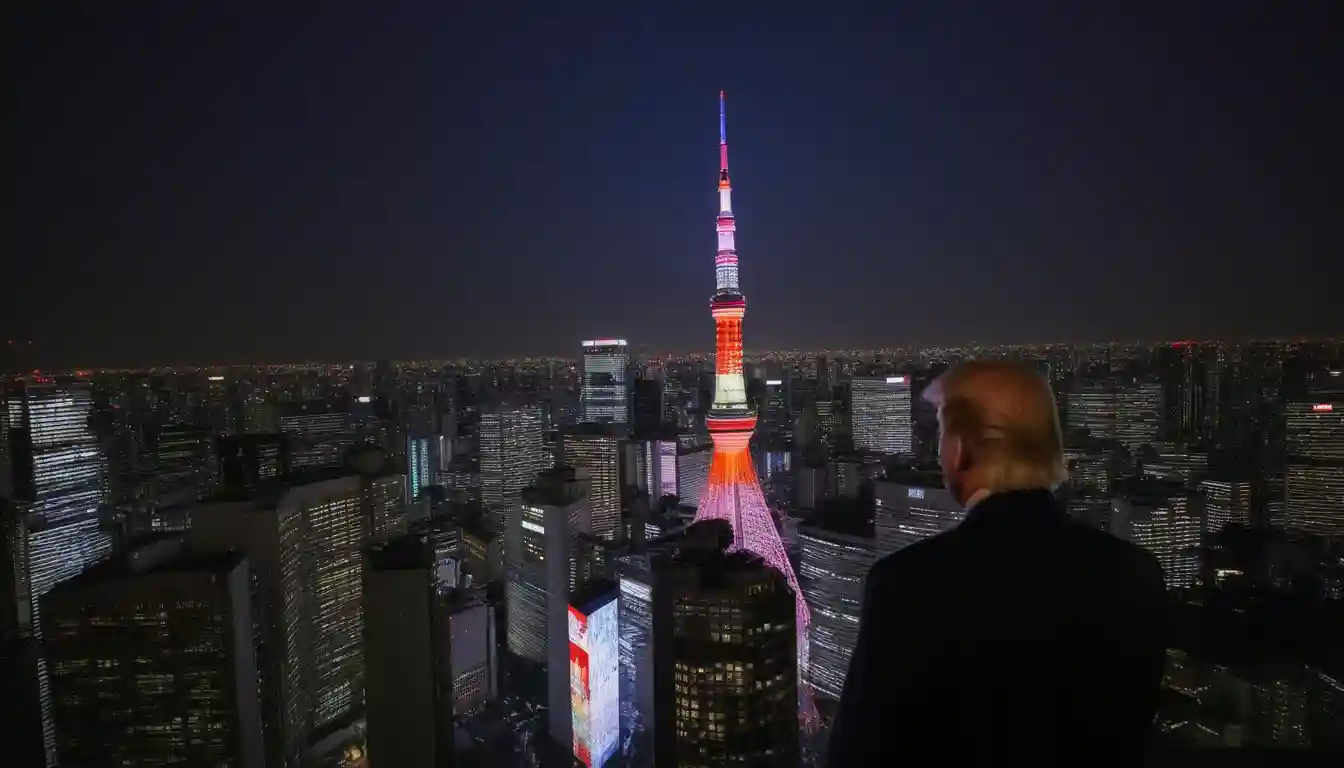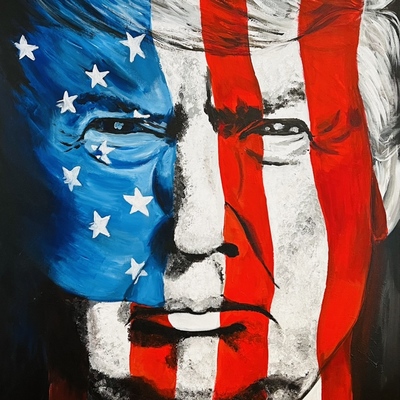
Trump Secures $550 Billion Japan Trade Deal as 15% Tariffs Replace Threatened 25% Rate
Trump's $550 Billion Japan Deal: A Victory Built on Sand?
As markets exhaled and Japanese auto stocks soared, President Donald Trump unveiled what he called a "massive" trade agreement with Japan yesterday, averting a threatened 25% tariff wall and securing pledges of $550 billion in Japanese investment. But beneath the diplomatic fanfare and market euphoria lies a complex reality: a partial climbdown dressed as triumph, with investments largely repackaged and implementation details conspicuously absent.
The landmark deal, announced just days before punitive tariffs were set to take effect on August 1, represents the Trump administration's most significant trade agreement to date. It establishes a 15% tariff on Japanese exports—substantially lower than the threatened 25%—while securing promises of unprecedented Japanese investment in American manufacturing, infrastructure, and technology.

The Emperor's New Tariffs: Reading Between the Lines
In the marble-floored halls of the Treasury Department where officials briefed investors Tuesday evening, the mood was triumphant. Yet seasoned trade economists noted the dissonance: a 15% tariff represents a substantial reduction from threatened levels, but still marks a sixfold increase from pre-2024 World Trade Organization rates.
"This deal recalibrates the entire bilateral relationship," said a senior administration official speaking on condition of anonymity. "Japan blinked first."
In Tokyo, the reaction was more measured. Prime Minister Shigeru Ishiba, already politically vulnerable after recent electoral setbacks, presented the agreement as averting catastrophe rather than securing victory.
"We preserved critical market access while establishing a predictable framework for our exporters," Ishiba told reporters Wednesday morning in Tokyo, as the Nikkei index surged 3.7% on relief that worse outcomes had been avoided.
For Japanese automakers—which account for nearly 30% of the country's exports to the United States—the flat 15% tariff represents a significant improvement from the 25% rate imposed in April. Toyota shares jumped 14% while Honda gained 11% in the immediate aftermath.
The $550 Billion Question: Real Investment or Clever Accounting?
The centerpiece of Trump's announcement—a $550 billion Japanese investment commitment in the United States—has generated both excitement and skepticism among analysts tracking cross-border capital flows.
"If you parse the numbers, approximately $275 billion appears to be rebranded investment already in the pipeline," observed a portfolio manager at a major asset management firm who analyzed the limited documentation released. "SoftBank's Vision Fund III and Japan Post's infrastructure initiative were already targeting U.S. assets before negotiations began."
The agreement supposedly guarantees that "90% of profits" from these investments will accrue to the United States, a claim that has bewildered investment bankers and tax specialists alike.
"Profit allocation in cross-border investment simply doesn't work that way," explained a corporate tax attorney at a global law firm. "Without seeing the legal mechanism, it's difficult to imagine how such a guarantee could be implemented or enforced."
Nevertheless, the investment pledge—whether new money or not—provides the administration with a powerful narrative of job creation and economic rejuvenation heading into the midterm elections.
Under the Hood: What the Deal Actually Delivers
Beyond headlines, the agreement contains substantive provisions that reshape the economic relationship between the world's first and third-largest economies:
- Automotive sector relief: Japanese carmakers see tariffs cut from 25% to 15%, a substantial competitive boost despite remaining far above historical norms
- Agricultural access: Japan will expand import quotas for American rice, beef, and dairy—sensitive sectors in Japan's rural economy
- Digital trade provisions: New rules governing e-commerce and data flows that parallel high-standard provisions in the U.S.-Mexico-Canada Agreement
- Preserved steel and aluminum tariffs: Notably, punitive 50% duties on Japanese steel and aluminum remain untouched, representing a significant omission
"This deal gives Trump the win he needed without forcing complete capitulation from Japan," noted a Washington-based trade consultant. "It's transactional statecraft at its most pragmatic."
Market Verdict: Euphoria Today, Uncertainty Tomorrow
Financial markets rendered an immediate verdict: relief. Beyond Japanese equities, the yen strengthened modestly against the dollar, while U.S. Treasury yields climbed five basis points in a risk-on move.
Currency strategists, however, detected skepticism in the market's reaction. "If traders fully believed in the $550 billion investment narrative, we'd see more pronounced dollar strength against the yen," said a foreign exchange analyst at a major investment bank. "The muted currency response suggests the market is pricing in implementation risk."
That risk appears substantial. Tokyo money markets are now pricing in a 40-basis-point Bank of Japan rate hike by December, a hawkish shift that could potentially undermine the deal's export benefits by strengthening the yen.
More critically, Prime Minister Ishiba's political future hangs by a thread, with a leadership challenge expected in September. Former Foreign Minister Taro Kono—openly skeptical of the 15% tariff framework—has emerged as a potential successor.
Winners and Losers in a Rebalanced Trade Landscape
For U.S. manufacturers, particularly automakers, the deal evokes mixed emotions. While avoiding a deeper trade war that would disrupt global supply chains, American auto executives privately express frustration that Japanese competitors secured tariff relief while U.S. vehicles produced in Canada and Mexico continue facing higher duties in overseas markets.
"The playing field just tilted further in their favor," lamented an executive at a Detroit-based automaker. "We're competing against companies that just received a 10-percentage-point cost advantage overnight."
American farmers stand to gain modestly through expanded Japanese market access, particularly for rice—a highly protected sector in Japan's agricultural policy. Yet quotas will remain on many sensitive agricultural products, limiting the scope of potential export growth.
For Japanese industrial conglomerates, the agreement provides breathing room but not comfort. The 15% tariff remains high enough to incentivize reshoring production to North America, a structural shift that will require massive capital expenditure in coming years.
A Blueprint for Global Trade or a Temporary Truce, especially South Korea?
The U.S.-Japan agreement has immediately reshaped the calculus for other trading partners facing similar tariff threats. European Union negotiators have reportedly floated 12-14% tariff levels as a potential "parity" solution, suggesting the Japan deal may establish a de facto ceiling for Trump's trade policy.
"This creates a template for resolution," observed a former U.S. trade official. "The administration has shown it's willing to compromise on the 25% threat if the right investment and market access concessions are made."
Whether the deal survives in its current form remains an open question. With a 30% probability of partial renegotiation within 12 months due to Japanese political volatility, investors are hedging their initial optimistic positioning.
For traders and portfolio managers, the path forward demands nuance rather than binary positioning. As one hedge fund strategist summarized: "Position for a halfway-completed deal—own selective Japanese cyclicals against U.S. legacy autos, fade the Nikkei after September leadership risk, and use yen rates as the convex expression of skepticism on the $550 billion figure."
As officials in both Washington and Tokyo release further implementation details in coming weeks, markets will continue digesting a trade agreement that—for all its fanfare—represents less a resolution than a calculated pause in an increasingly unpredictable global trade environment.
Investment Thesis
| Category | Key Points |
|---|---|
| Tariff Impact | 15% flat tariff on all Japanese goods; resets cost curve, absorbable by many industries. JPY needs to weaken to ¥170/USD for revenue neutrality (currently ¥157). |
| Investment Pledge | $550bn headline figure includes rebadged funds ($275bn already in pipeline). Net new investment ~$210bn over 5 years. |
| Market Moves | - Toyota ADR +14% (tariff relief priced). - Nikkei +3.7% (auto-driven). - JPY stronger (-0.4%), suggesting skepticism. |
| BoJ Policy Risk | 40bps hike priced by December; could push JGB 10-yr above 1%, flattening USD/JPY curve. |
| Political Risks | 30% chance PM Ishiba is ousted; successor may renegotiate tariffs or slow-walk investment. |
| Trade Ideas | - Long Honda (HMC)/Short Ford (F). - JPY curve flattener (pay 2-yr, receive 10-yr). - US farmland REITs (LAND, FPI). - Nikkei call spreads (32k/36k). |
| Risks | - PM ouster (30%). - US autoworker backlash (20%). - BoJ over-tightening (15%). - Global slowdown (25%). |
| Credit & Duration | - Japanese OEM credit spreads compressed; rotate to US supply-chain issuers (APTIV, ON). - Underweight USTs <10yrs due to JPY debt financing. |
| Catalysts | - Aug 6 (BoJ meeting). - Sep 15 (LDP vote). - Nov 4 (US mid-terms). |
Bottom Line: The deal is a structural shift, but market optimism is overdone. Focus on selective cyclicals (e.g., Honda), hedge political risks, and exploit JPY rate skepticism.
Disclaimer: This analysis is provided for informational purposes only and does not constitute investment advice. Past performance does not guarantee future results. Readers should consult with financial advisors for personalized guidance.